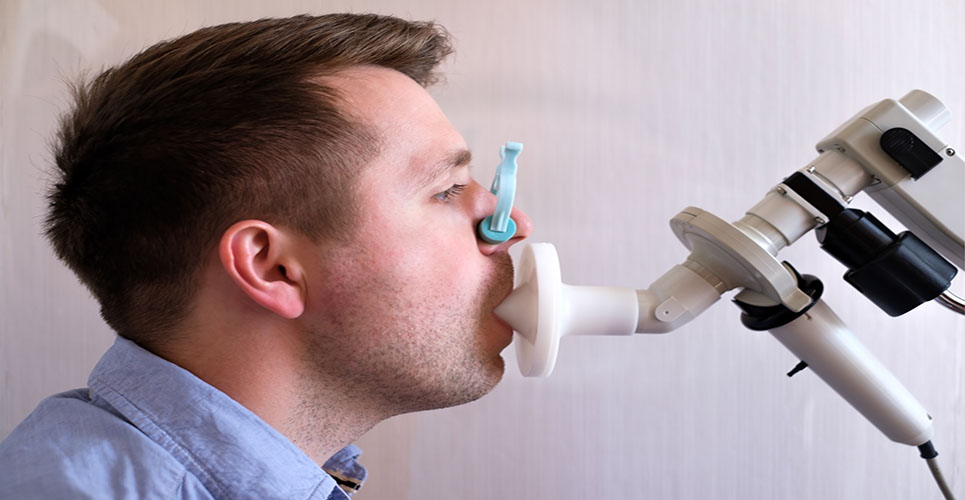↓Article continues below this sponsored advert↓
↑Advertisement↑
Novartis has announced that the European Commission approved once-daily Ultibro® Breezhaler® (indacaterol 85mcg/glycopyrronium 43mcg) as a maintenance bronchodilator treatment to relieve symptoms in adult patients with chronic obstructive pulmonary disease (COPD).
In addition, the Japanese Ministry of Health, Labour and Welfare (MHLW) approved once-daily Ultibro® Inhalation Capsules (glycopyrronium 50mcg/indacaterol 110mcg), delivered through the Breezhaler® device, for relief of various symptoms due to airway obstruction in chronic obstructive pulmonary disease (COPD). Ultibro® Breezhaler®/Ultibro® Inhalation Capsules were developed under the name QVA149.
“We are very pleased that the European Commission and Japan approved QVA149, nearly simultaneously, for COPD patients. This rapid approval in Japan reflects our build-up of clinical trial and regulatory capabilities in Japan,” said David Epstein, Division Head, Novartis Pharmaceuticals. “Many COPD patients will now have a better treatment option, including first-line therapy with the launch of Ultibro Breezhaler in Europe.”
Dual bronchodilation with QVA149 is expected to set a new standard of care in COPD by combining the proven efficacy benefits and safety profiles of two established Novartis COPD treatments: the LABA, Onbrez® Breezhaler® (indacaterol); and the LAMA, Seebri® Breezhaler® (glycopyrronium bromide). Both these components are delivered through the Breezhaler® device, as is QVA149, and are widely available around the world.
The approvals of QVA149 in Europe and Japan were based on the comprehensive IGNITE Phase III clinical trial program, one of the largest international trial programs in COPD comprising 11 studies in total with more than 10,000 patients from 52 countries.[1-3,6-15] From the eight IGNITE studies which completed in 2012,[1-3,6-10] data showed that QVA149 significantly improved lung function versus several current standard treatments[1-3,6] and showed significant symptomatic improvements versus placebo in breathlessness, exercise tolerance, rescue medication use and health-related quality of life.[1,2,6] QVA149 also demonstrated statistically significant symptomatic improvements in breathlessness, rescue medication use and health-related quality of life compared to open-label (OL) tiotropium 18mug.[1] The rate of all COPD exacerbations (mild, moderate and severe) was significantly improved with QVA149 compared to glycopyrronium 50mcg and OL tiotropium 18mug.[3]
“Since 2007, Novartis has received approvals for 15 new treatments and 16 new indications for existing treatments in Japan,” said Timothy Wright, Global Head Development, Novartis Pharmaceuticals. “Japan plays a critical role in our global clinical research program. In the last five years, Novartis has conducted 175 clinical studies in Japan with over 14,000 patients.”
In clinical studies, QVA149 demonstrated an acceptable safety profile with no meaningful differences between the treatment groups (placebo, indacaterol 150mcg, glycopyrronium 50mcg, OL tiotropium 18mcg, salmeterol/fluticasone (SFC) 50mcg/500mcg) in the incidence of adverse and serious adverse events.[1-3,6] The safety profile was characterised by typical anticholinergic and beta-adrenergic effects related to the individual components of the combination.[1-3,6-10]
COPD is a progressive disease affecting up to 10% of adults across Europe[4] and is projected to be the third leading cause of death by 2020.[5] In addition, 5.3 million patients are currently living with COPD in Japan.
References
- Bateman ED, Ferguson GT, Barnes N, et al. Dual bronchodilation with QVA149 versus single bronchodilator therapy: the SHINE study. European Respiratory Journal [Published on May 30 2013]. doi: http://dx.doi.org/10.1183/09031936.00200212. [Accessed 12 September 2013].
- Vogelmeier C et al. Efficacy and safety of once-daily QVA149 compared with twice-daily salmeterol/fluticasone in patients with COPD (ILLUMINATE): a randomised, double-blind, parallel group study. Lancet Respiratory Medicine. 2013;1(1): 51-60.
- Wedzicha JA et al. Analysis of Chronic Obstructive Pulmonary Disease Exacerbations with the Dual Bronchodilator QVA149 Compared with Glycopyrronium and Tiotropium (SPARK): a Randomized, Double-blind, Parallel-group Study. Lancet Respiratory Medicine 2013;1(3): 199-209.
- European Federation of Allergy and Airways Diseases Patients Associations. Chronic Obstructive Pulmonary Disease. Available at: http://www.efanet.org/wp-content/uploads/
- 2012/07/EFACOPDBook.pdf. [Accessed 18 September 2013].
- Global Alliance Against Chronic Respiratory Diseases (GARD). Global surveillance, prevention and control of chronic respiratory diseases: a comprehensive approach. Available at: http://www.who.int/gard/publications/GARD_Manual/en/. [Accessed 18 September 2013].
- Beeh K et al. QVA149 once daily improves exercise tolerance and lung function in patients with COPD: the BRIGHT study. Thorax. 2012;67(2) A147.
- Dahl R et al. Safety and efficacy of dual bronchodilation with QVA149 in COPD patients: the ENLIGHTEN study. Respiratory Medicine Journal 2013;107:1558-1567.
- Mahler D et al. Superior lung function with once-daily QVA149 translates into improvements in patient reported breathlessness compared with placebo and tiotropium in COPD patients: the BLAZE study. [ATS abstract 45308; Session C20; Date: May 21, 2013 Time: 8:15-10:45].
- ClinicalTrials.gov, n.d. Long Term Safety and Tolerability of QVA149 Versus Tiotropium in Japanese Patients With Chronic Obstructive Pulmonary Disease (COPD) (ARISE). [Online] Available at: http://www.clinicaltrials.gov/ct2/show/
- NCT01285492?term=%28ARISE%29&rank=4. [Accessed 18 September 2013].
- ClinicalTrials.gov, n.d. Comparison of Safety and Efficacy of the Combination Product QVA149A Against the Concurrent Administration of the Individual Components, QAB149 and NVA237, in Patients With Chronic Obstructive Pulmonary Disease (COPD) (BEACON). [Online]
- Available at: www.clinicaltrials.gov/ct2/show/NCT01529632?term=BEACON&rank=6. [Accessed 18 September 2013].
- ClinicalTrials.gov, n.d. Comparison of Long-term Safety of the Combination Product QVA149A Against Placebo and Standard of Care Treatment in Chronic Obstructive Pulmonary Disease Patients With Moderate to Severe Airflow Limitation (RADIATE). [Online] Available at: www.clinicaltrials.gov/ct2/show/NCT01610037?term=GLISTEN&rank=1. [Accessed 18 September 2013].
- ClinicalTrials.gov, n.d. A 26-week Treatment Randomized, Double-blind, Double Dummy, Parallel-group Study to Assess the Efficacy, Safety and Tolerability of QVA149 (Indacaterol / Glycopyrronium Bromide) Compared to Fluticasone/Salmeterol in Patients With Moderate to Severe Chronic Obstructive Pulmonary Disease. (LANTERN) [Online]. Available at: www.clinicaltrials.gov/ct2/show/NCT01709903?id=01709903&rank=1. [Accessed 18 September 2013].
- ClinicalTrial.gov, n.d. A 52-week Treatment, Multi-center, Randomized, Double-blind, Double Dummy, Parallel-group, Active Controlled Study to Compare the Effect of QVA149 (Indacaterol Maleate / Glycopyrronium Bromide) With Salmeterol/Futicasone on the Rate of Exacerbations in Subjects With Moderate to Very Severe COPD (FLAME). [Online] Available at: http://clinicaltrials.gov/ct2/show/
- NCT01782326?term=COPD+novartis+52&rank=2. [Accessed 18 September 2013].
- FDA Access Data, n.d.Spiriva Medical Review Part 2. [Online]
- Available at: http://www.accessdata.fda.gov/drugsatfda_docs/
- nda/2004/21-395_Spiriva.cfm. [Accessed 18 September 2013].
- FDA Access Data, 2003.Advair Medical Review. [Online]
- Available at: www.accessdata.fda.gov/drugsatfda_docs/nda/

